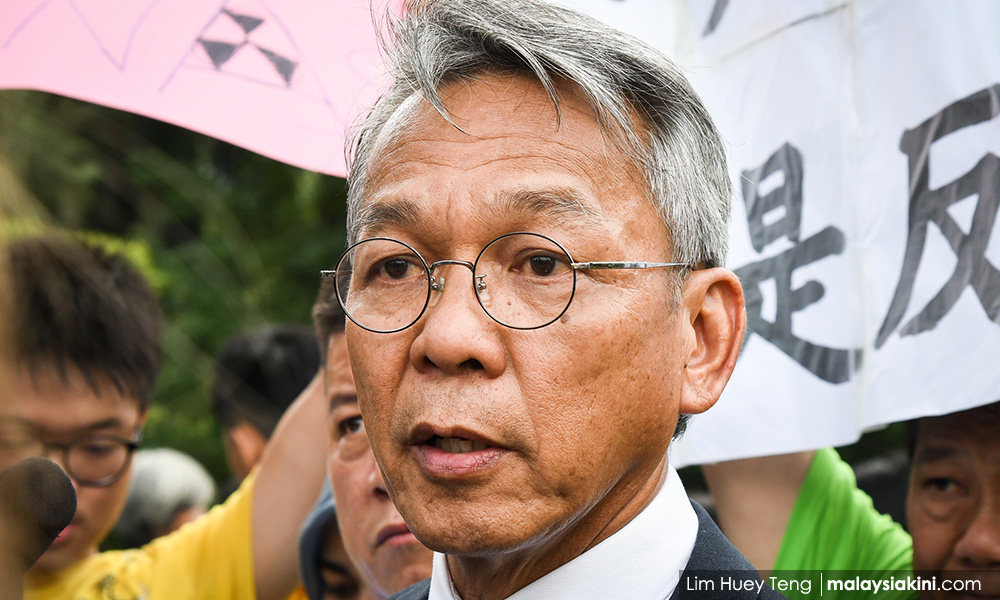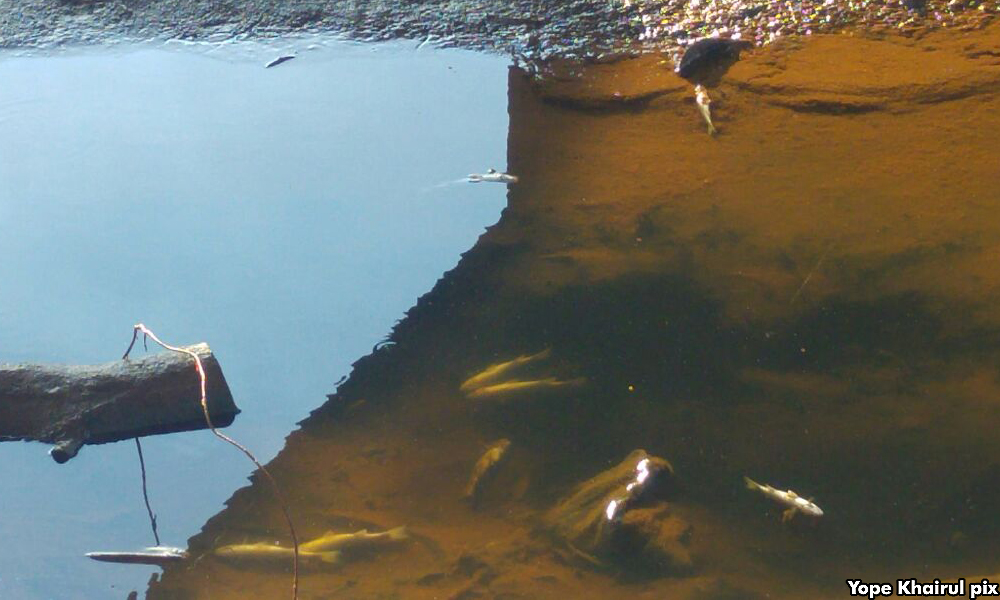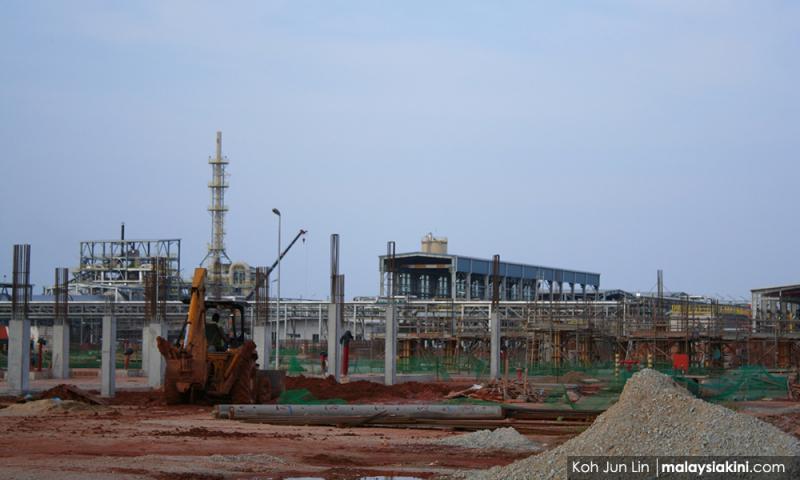Uphold the rule of law on Lynas issue
LETTER | Back in 2011 and 2012, when the green movement in the country peaked, strong line-ups of PKR, DAP and PAS leaders took part in the numerous protests held to oppose the setting up of the Lynas rare-earth plant and Raub-Australian Gold Mine’s carbon-in-leach plant.
They slammed the BN government for putting profit above life in its desperate move to achieve economic goals through foreign investments in polluting industries.
Many of these leaders reinstated their commitments to a clean and safe Malaysia right before the last two general elections, raising hope for the millions of people who wished to preserve our natural habitat and hand over a toxic-free environment for the generations to come.
As the BN government refused to listen to the people but repeated after the Lynas management that the waste was safe and no radioactive waste would be generated, replacing BN with Pakatan Harapan was the people’s only hope to get rid of the polluting plant that would leave behind millions of tonnes of radioactive wastes.
Together with the Bersih activism that calls for free and fair elections, the green movement had contributed to the fall of the corrupt BN regime, not just through mammoth rallies but also by way of the initiatives of various citizens. Activists and ordinary people who wanted a clean and green future organised talks, workshops and even printed and distributed free citizen papers nationwide to raise people’s awareness on environmental issues.
Wong Tack, current Bentong MP (photo, below), had led the monumental 300km ‘green walk’ from Kuantan to Kuala Lumpur to showcase people’s determination in stopping Lynas. Before the 13th general election, more than a million signatures were collected in Himpunan Hijau’s anti-Lynas campaign, signifying the strong will of the people to reject the Australian company. It is undeniable that the green activists of our time had raised political awareness among the people, turning more people into agents of change, who later made the impossible possible in the last general election.

Now that Harapan has been given the mandate to rule, it should not take the people’s support for granted. What was wrong in the BN era remains wrong in the Harapan era. Much had been said about the adverse environmental impacts of the rare-earth processing plant. Therefore, what the Harapan government should be doing now is to demonstrate its political will to place the well-being of the people and the environment before economic development.
We have had rules and regulations in place, what the new government has to do is just upholding the rule of law as promised. Rule 5 (a) of the Atomic Energy Licensing (Radioactive Waste Management) Regulations 2011 requires the licensees to ensure that radioactive waste is disposed within a year of its production.
Rule 9 (5) of the Environmental Quality Regulations (Scheduled Waste) 2005 states that the quantity of scheduled wastes accumulated on site shall not exceed 20 metric tonnes and cannot be stored on site beyond 180 days. During the BN era, such rules had had no effect on Lynas. Moreover, although Lynas had vowed to remove all wastes generated at its plant during the two-year temporary operating period in two undertaking letters, nothing had happened despite the firm’s failure to commercialise its residues, resulting in continuous accumulation of both radioactive and non-radioactive waste.
Instead, a Full Operating Stage Licence (FOSL) was granted to the firm in September 2014 and then renewed in September 2016. Is Lynas not enjoying special treatment all this while? What have the authorities, who are supposed to enforce the laws, been doing in the past six years?
As of last December, the accumulated Water Leached Purification Residue (WLP) has reached 451,564 metric tonnes while the scheduled waste Neutralisation Underflow Residue (NUF) hit 1.113 million metric tonnes. This unmanageable situation cannot be allowed to go on.
The Ministry of Energy, Science, Technology, Environment and Climate Change under Yeo Bee Yin has done the right thing to order Lynas ship out the WLP wastes before its licence expires on Sept 2, 2019, to secure a licence renewal (but we have to bear in mind that this is a compromise as, in the undertaking letter dated Feb 2, 2012, Lynas promised to remove from Malaysia ‘all wastes’ generated during the temporary operating period). In other words, if the firm is unable to fulfil the precondition, it will have to close down the Gebeng plant.
Nevertheless, uncertainties arose when the Prime Minister Dr Mahathir Mohamad said earlier in Tokyo, “We will allow Lynas to carry on, because otherwise we are going to lose a very big investment from Australia.” He even suggested spreading the radioactive waste out as a possible solution if Australia declines to take back the waste.
Inconsistencies in official information
As the country has reached the final stage in the decision-making process, it is imperative that all inconsistencies in official documents and Lynas’ claims be taken seriously so that the government and the public can get nearer to the truth of the actual health and environmental impact of Lynas’ waste. Only so an informed decision can be made.
However, the review committee on the Lynas operations has failed to address at least two inconsistencies. First of all, as Dr Chan Chee Khoon has discussed in his letter to Malaysiakini, the 2010 RIA report and Preliminary Environmental Impact Assessment (PEIA) requirement respectively state that the WLP has a radioactivity concentration of 61 Bq/g and 62.0 Bq/g.

These figures are 10 times higher than what Lynas and AELB have been telling us and what has been written into the review committee report, which is 6 Bq/g. The estimations of RIA and PEIA are based on the measurement that takes into account the radioactivity of the entire decay chain of Th-232 in secular equilibrium, not just the parent radionuclide.
This is in line with the requirement of AELB's technical guideline, as Chan explained in his subsequent letter to Malaysiakini. If one argues that the 10x figure should not be used, one should explain why the radioactivity concentration for NUF, 0.25 Bq/g and FGD, 0.47 Bq/g stated in the RIA report are taken as they are without being divided by 10 in the review committee report?
This piece of information is crucial for the government and the people to make an informed choice. If the radioactivity concentration of WLP is 10 times higher than what we have been told, there are more reasons for us to reject the idea of ‘spreading it out’ across the country so that Lynas can get rid of the waste without building a permanent disposal facility, in the case that Australia rejects the idea of shipping back the waste.
The second inconsistency is that, in the 2010 Radiological Impact Assessment (RIA) report, all WLP, NUF and Flue Gas Sulphurisation Residue (FGD) are categorised as Technologically Enhanced Naturally Occurring Radioactive Materials (Tenorm), not Naturally Occurring Radioactive Materials (NORM), as stated in the review committee report and the Energy Ministry’s press release.
To cite the RIA report, "Operation of the plant would involve transportation and handling of lanthanide concentrate containing Tenorm, some discharges of gaseous and liquid effluents to the environment at certain stages of the process and generation of Tenorm residues (WLP, FGD and NUF) of varying concentrations at the end of the process.
"Two of the Tenorm residues are expected to contain an enhanced concentration of Tenorm and are potential to cause some impact to the people involved."
If the RIA done by Nuclear Malaysia is right, then, again, the competency of AELB, which informed the review committee, is in question.
According to MI Ojovan, WE Lee, in An Introduction to Nuclear Waste Immobilisation, Tenorm means materials that contain natural radionuclides, in which the levels are concentrated due to technological operations. They further point out that Tenorm are, in many cases, large-volume, low-activity waste streams produced by industries. The level of individual exposure from NORM is usually trivial. However, Tenorm in some cases can be dangerous and classified as radioactive waste’. Such descriptions are identical with the characteristics of WLP.
In a statement issued on April 4 this year, Sahabat Alam Malaysia debunked Lynas’ claim, pointing out that the concentrated industrial waste can only be Tenorm and that it is scientifically misleading to call it Norm. The Energy Ministry should view this seriously and correct the piece of false information that has been written into its own press statement and the review committee report.
Certainly, Harapan has been put in a very difficult situation by the previous government, which has left a hard stain on our land. But, to many people, that is exactly why Harapan was elected.
We want a government that can make tough decisions in order to safeguard the well-being of the people and the environment. To achieve economic growth, Malaysia can do better than holding on to heavily polluting foreign industries for short-term economic gains. Many Harapan leaders had believed this before. How about now?
CHAN WEI SEE, a former journalist, is now a PhD student researching on Malaysia’s environmental development.
The views expressed here are those of the author/contributor and do not necessarily represent the views of Malaysiakini.
RM12.50 / month
- Unlimited access to award-winning journalism
- Comment and share your opinions on all our articles
- Gift interesting stories to your friends
- Tax deductable
